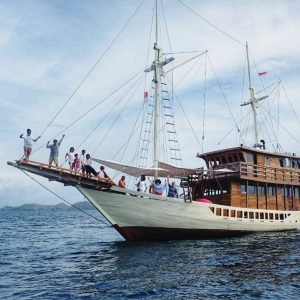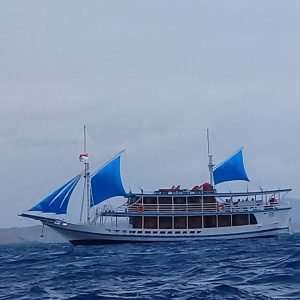Overview of Transportation Options in Sumba
Transportation in Sumba–Sumba, an island in Indonesia, boasts a diverse array of transportation options, catering to both locals and visitors aiming to explore its unique landscapes. Among the most popular traditional modes of transport are ojek, which are motorcycle taxis that provide convenient and flexible travel across the island’s varied terrain. Ojek is particularly favored for short distances and can easily navigate the often narrow pathways that might be inaccessible to larger vehicles.
In addition to ojek, bemos, or minivans, serve as a vital component of Sumba’s transportation network. These shared vans operate on designated routes and are an economical way to travel between towns and attractions. While bemos typically follow set schedules, they are known for their ability to accommodate passengers even in busy periods, making them a practical choice for daily commuting and longer journeys alike.
The emergence of ride-hailing services has further expanded the transportation landscape in Sumba. Apps like Gojek and Grab have gained popularity, providing riders with a modern alternative to traditional transportation. These services facilitate easier navigation, allowing passengers to book rides directly from their smartphones, thus streamlining the transit process on the island.
For those interested in getting to Sumba, the primary access points are the Umbu Mehang Kunda Airport and several seaports offering ferry services. Direct flights from major cities in Indonesia bolster connectivity to Sumba, while ferries from neighboring islands also afford travelers a scenic journey to the island. Once on the island, navigating the towns and beautiful landscapes can be achieved via the aforementioned transportation options, ensuring exploration of Sumba’s natural attractions is both accessible and enjoyable.
Challenges and Limitations of Transportation in Sumba
Traveling through Sumba presents a unique set of challenges primarily due to the island’s infrastructure limitations. One of the most significant issues is the condition of the roads. Many roads are poorly maintained, with potholes, uneven surfaces, and occasional washouts that can create hazardous driving conditions. This can lead to delays and difficulties for travelers, particularly when navigating remote areas where road quality can severely impede access.
In addition to road conditions, public transportation options in Sumba are limited. The frequency of public transport services is often insufficient to meet the demands of both locals and tourists. Schedules can be irregular, leading to uncertainty regarding travel times. This inconsistency makes it difficult for visitors to plan their itineraries effectively. Instead, many travelers find that hiring a private vehicle is often a more reliable option, though this can also lead to higher expenditure.
Environmental factors further complicate transportation in Sumba. The island experiences varying weather patterns, including heavy rains during the wet season, which can result in road closures and travel delays. Seasonal variations can also affect the availability of transportation services, as certain routes may become temporarily impassable. Consequently, travelers must remain flexible and prepared for potential changes in their travel plans due to both infrastructural and environmental challenges.
Overall, while Sumba’s natural beauty is undoubtedly captivating, navigating the island can prove to be fraught with logistical hurdles. Understanding these challenges is essential for ensuring a smoother travel experience, allowing for better preparation and adaptation to the unique landscape of transportation in Sumba.
Cultural Insights on Transportation Practices
Transportation in Sumba is not merely a practical necessity but an integral facet of the island’s cultural identity. The local customs and traditions significantly influence how the people of Sumba navigate their unique landscapes. One of the most striking aspects of transportation practices here is the emphasis on communal travel. In Sumbanese society, traveling together reinforces social bonds and fosters a sense of community. Whether for attending ceremonies, markets, or visiting family, the act of journeying with others reflects collective values and enhances social cohesion.
Transportation also plays a pivotal role in various traditional ceremonies that mark important life events. Festivities such as weddings, funerals, and harvest celebrations often require collective movement, which influences the choice of transport. The traditional horse-drawn carts, or “bendi,” hold particular significance during these events, as they symbolize status and convey respect for cultural norms. Such ceremonies are not only about the physical act of moving from one place to another; they embody the spiritual and communal essence of Sumba, showing how transportation shapes and is shaped by local customs.
The geographical challenges of Sumba further dictate the way locals adapt their transportation methods. Given the island’s rugged terrain, traditional knowledge plays a vital role in determining travel routes and means. Whether navigating steep hills or crossing rivers, the Sumbanese people often rely on their farming skills and animal husbandry—utilizing horses, motorbikes, and even foot travel—based on the specific environment and context. This resourcefulness underscores the adaptive strategies developed over generations, showcasing how physical landscapes influence cultural practices related to transportation. Understanding these cultural dimensions offers a richer perspective on transportation in Sumba, highlighting its importance beyond mere logistics.
Future Trends in Sumba’s Transportation Landscape
As Sumba continues to attract attention for its pristine natural beauty and rich cultural heritage, significant advancements in transportation are anticipated in the coming years. Improved infrastructure is expected to play a crucial role in accommodating the rise in tourism, which has become a valuable contributor to the local economy. One area of focus will likely be the enhancement of existing road networks and the development of new transportation routes to facilitate smoother access to various attractions around the island.
In addition to roads, the integration of technology into Sumba’s transportation services is poised to transform how residents and visitors navigate the island. The adoption of electric vehicles could gain momentum, driven by environmental considerations and the need for more sustainable transit options. As battery technology improves and charging infrastructure is established, electric vehicles may become an increasingly viable choice in minimizing the ecological impact of transportation on this delicate island ecosystem.
Moreover, mobile applications aimed at enhancing transport services are expected to become more prevalent. Such applications can provide users with real-time information regarding vehicle availability, traffic conditions, and alternative routes. This can significantly improve travel experiences and enable tourists to explore Sumba’s diverse landscapes with greater ease and convenience.
Furthermore, government initiatives designed to bolster Sumba’s transportation network may emerge. These initiatives could include investment in public transport systems, the promotion of ride-sharing services, and the development of educational programs to promote responsible tourism. By fostering a more interconnected transportation framework, Sumba can enhance accessibility while also preserving its cultural and natural heritage for future generations.
Overall, the anticipated developments in transportation within Sumba hold promise for a more efficient, sustainable, and accessible travel experience that benefits both residents and visitors alike.





